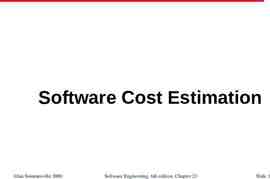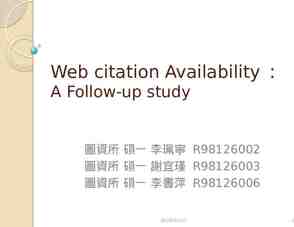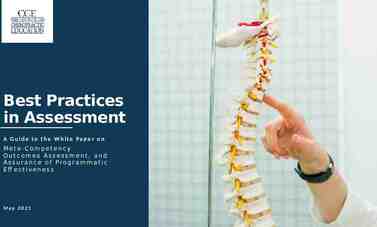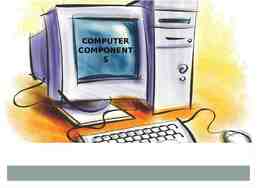VICTORIAN CURRICULUM F-10 UNPACKING STUDENT REPORTING 2018
25 Slides1.43 MB

VICTORIAN CURRICULUM F-10 UNPACKING STUDENT REPORTING 2018

EDUCATION STATE TARGETS The Education State school targets reflect our focus on excellence and equity, and our goal to equip all students with the personal and practical skills to live the lives they want to live, and get the jobs they need. 2

FRAMEWORK FOR IMPROVING STUDENT OUTCOMES (FISO) Excellence in teaching and learning Curriculum planning and assessment Building practice excellence 3

FISO EXCELLENCE IN TEACHING AND LEARNING Curriculum planning and assessment Essential Element 1 D ocumented curriculum plan, assessment and shared pedagogical approaches informed by strategic and annual implementation planning regularly reviewed and updated by teams of teachers time and resources allocated – share pedagogical content knowledge; implement and monitor effective learning programs; plan content-specific instruction formative assessment – identify gaps in students’ learning; monitor student progress Essential Element 6 Moderation of common student assessment tasks regular moderation of student assessment a range of assessment data sets explored curriculum development and teacher practice informed by data analysis used as the basis for regular feedback and reporting to students and their parents and carers 4

CURRICULUM PLANNING Whole school curriculum planning and reporting Schools develop and publish a whole-school curriculum plan that documents their teaching and learning program. Defined curriculum content is the basis for student learning. Curriculum planning is based on two-year bands of schooling rather than each year level. Schools must report student learning against the achievement standards in the curriculum. Schools report student learning to students and parents in formats that best suit local school communities rather than through a single centrally prescribed format. 5

MEANINGFUL REPORTING using QUALITY REPORTING PROCESSES Student reporting: to parents/carers and students – teachers, students and families in regular and meaningful communication about students’ learning needs. School reporting: to school leadership, teachers, school council - the local community – concise summary of the school’s achievements and progress. System reporting: to the Department – data and information to support system-wide improvements. 6

REPORTING TO PARENTS Student Reports include information about student achievement and progress against the Victorian Curriculum F-10 achievement standards. Achievement shows where a student is on a learning continuum at the end of a specified period of schooling. show where a student is placed in relation to individual learning goals and targets and/or the learning of their peers. Progress represents the growth in learning that has occurred by referencing the last time such achievement standards were reported against for that student in the school. 7

MINIMUM REQUIREMENTS 1. Schools must provide a written student report at least twice a year to the parent(s)/carer(s) of each child enrolled at the school. 2. Student reports must be in an accessible form and be easy for a parent(s)/carer(s) to understand. 3. Schools must report against the Victorian Curriculum F-10 achievement standards, which includes Towards Foundation Levels A – D, and the standards outlined in the EAL Companion to the AusVELS. 4. Both achievement and progress against the achievement standards must be included in the student report. 5. A five-point scale must also be used, either as a written or graphical representation; if worded descriptors are not used, the scale must be explained. 8

RESPONSIBILITIES Teachers make balanced, evidence-based, defensible judgements about student progress and achievement against the Victorian Curriculum F-10 achievement standards. record scores based on the judgement of each student’s level of achievement against the achievement standards of the curriculum area taught during the reporting period. – using evidence gained from the range of formal and informal assessment tasks and activities undertaken over a period of time. record ratings that accurately reflect quality of a student’s achievement and progress against the achievement standards. involve students in the reporting process through the giving and receiving of feedback. 9

CURRICULUM STRUCTURE AND REPORTING IMPLICATIONS Content descriptions organised in strands. – not used purposes. for are reporting Achievement standards have no additional organising structure. Schools must use achievement standards for reporting student achievement – achievement standards are not to be deconstructed for reporting purposes ** HPE** Curriculum Area Achievement Standard Unique Reporting Code Capabilities Ethical Capability VCEC Capabilities Scoring Range 0.5 to 11.0 A to 11.0 Personal and Social Capability VCPSC English Speaking and Listening VCESL HPE Health Education VCHPEH HPE Physical Education VCHPEPE Mathematics Number and Algebra VCMNA Science Science VCS Technologies Design and Technologies VCDS The Arts Drama VCADR The Humanities Economics and Business VCEB A to 11.0 A to 11.0 A to 11.0 A to 11.0 A to 11.0 A to 11.0 A to 11.0 4.5 to 11.0 http://victoriancurriculum.vcaa.vic.edu.au/ 10

GUIDELINES The Victorian Curriculum F-10 achievement standards 11 levels (F-10) and Towards Foundation Level (A to D). – English and Mathematics: 11 levels with an achievement standard per level. – other learning areas and capabilities: five or six bands with an achievement level per band 11

GUIDELINES Placement of Standards http://victoriancurriculum.vcaa.vic.edu.au/overview/curriculum-design/standards-and-levels 12

GUIDELINES Curriculum Scores scoring range for reporting to CASES21 – A to 11.0 teachers will record the score that accurately reflects the students level of achievement against the Achievement Standards teachers are able to place a student anywhere on the continuum 0.5 increments – equate to 6 monthly progress within an achievement standard scores are NOT progression points – used for reporting student levels of achievement to the Department via CASES21 13

GUIDELINES Years Foundation to 2 report student achievement against the achievement standards in five focus areas: – English – Mathematics – Health and Physical Education – The Arts – Personal and Social Capability. if other curriculum areas are taught these should be reported against also. Years 3 to 10 report student achievement against the achievement standards in all learning areas and capabilities: – Years 3 to 8 focus on: English Mathematics Science. 14

GUIDELINES Schools report student progress against age-related expected level of achievement in: English – reported every semester at mode level Mathematics – reported every semester at strand level – exception for English and Mathematics – where it has been determined by schools in partnership with parents and carers to be unnecessary for an individual student – Science – reported at least once a year (from Year 3). Reporting against Science achievement standards prior to Year 3 is optional. The age-related expected levels relate to the end of the corresponding year. 15

GUIDELINES Health and Physical Education Schools report student achievement in Health and Physical Education separately – do not scale in the same way. Physical Education reported twice a year. Health Education reported whenever it is taught. 16

GUIDELINES English as an Additional Language (EAL) Reports for students identified as EAL in a format consistent with the other reports. No change to EAL standards for 2018. Organised into three broad stages: – A Stages for Years Prep to 2 – B Stages for Years 3 to 6 – S Stages for Years 7 to 10. In all EAL stages students assessed in the modes of: – Speaking and Listening – Reading and Viewing – Writing. 17

HISTORICAL DATA AND BREAKING OF DATA CHAIN If a curriculum area is being implemented for the first time in 2018 data chain must be broken for those curriculum areas. For English as an Additional Language student progress will continue to be shown. – AusVELS curriculum for 2018 Comparative data will be shown when a curriculum area is reported for second time. 18

STUDENT PROGRESS - what does it look like? An important aspect of curriculum planning is being able to articulate what student progress looks like, using the achievement standards in the curriculum continuum. Developing Indicative Progress descriptions assist teachers to: support planning with a focus on student progression along the curriculum continuum explain the learning expectations to the students assess and report student achievement. http://www.vcaa.vic.edu.au/Pages/foundation10/viccurriculum/curriculum-area-advice.aspx 19

VICTORIAN CURRICULUM CONTINUUM IS NOT TIME RELATED How do you determine the student’s level of achievement and a score to reflect that? Year 7 Sem 1 Year 8 Sem 2 Sem 1 Levels Score 9.0 Sem 2 Level 9 8.5 A 8.0 Level 8 7.5 B 7.0 Level 7 6.5 6.0 C Level 6 5.5 20

ASSIGNING SCORES AND RATINGS Teachers assess learner achievement at points in time to make judgments about where they are at along the continuum – learners progress at different rates – learners’ progress can be anywhere on the continuum at any time during the reporting period record scores that accurately reflect the student’s level of achievement against the achievement standards for all curriculum areas taught during the reporting period – scores are recorded in CASES21 via the school’s student reporting software package or via direct entry method (for use by smaller schools) record a ‘did not participate’ or ‘DNP’ for students who are not being assessed in any curriculum area/strand/mode due to special circumstances 21

DISPLAYING ACHIEVEMENT AND PROGRESS 22

FIVE POINT SCALE Rates the quality of a student’s achievement and progress against the achievement standards. – An age-related expected scale must be employed for reporting against the achievement standards in English, Mathematics and Science. – Another kind of scale may be used to report against the achievement standards in other curriculum areas (learning areas/capabilities) – More than one scale may be employed for the same learning area or capability. Can be in a form appropriate to the needs of the school and be in a written or a graphic representation. 23

STUDENT REPORTING ADVICE Questions about student reporting are welcome via the Student Reports mailbox at [email protected] Student Reporting www.education.vic.gov.au/school/teachers/teachingresources/practice/Pages/ reports.aspx VCAA Curriculum planning and reporting guidelines http://www.vcaa.vic.edu.au/Documents/viccurric/RevisedF10CurriculumPlanningReportingGuidelines.pdf Students with disabilities reporting http://victoriancurriculum.vcaa.vic.edu.au/overview/diversity-of-learners English as an Additional Language reporting www.vcaa.vic.edu.au/Documents/viccurric/eal/EAL companion to AusVELS.pdf 24

FURTHER ADVICE School Policy and Advisory Guide: Student Assessment and Reporting www.education.vic.gov.au/school/principals/spag/curriculum/pages/assessment.aspx Education State www.education.vic.gov.au/about/educationstate/Pages/default.aspx Framework for Improving Student Outcomes (FISO) https://edugate.eduweb.vic.gov.au/edrms/project/fiso/SitePages/Home.aspx VCAA Insight Assess Portal www.insight.vic.edu.au/ 25






